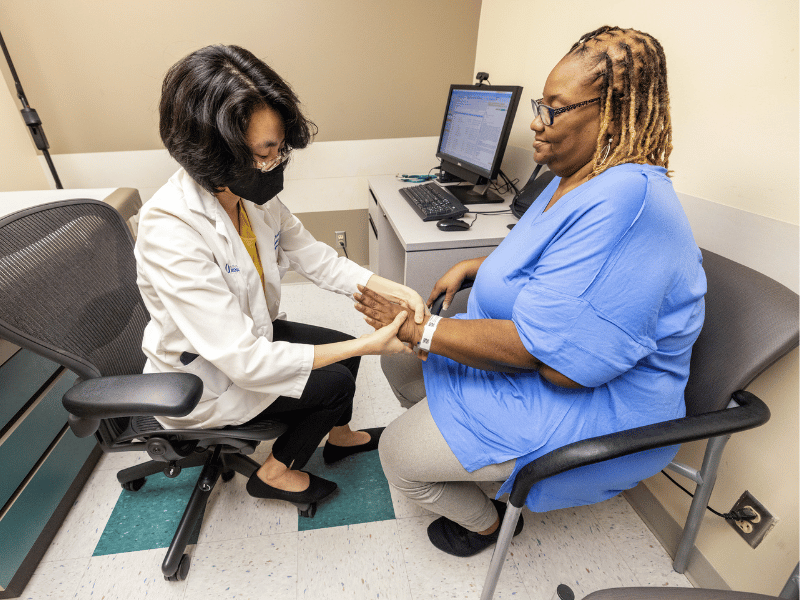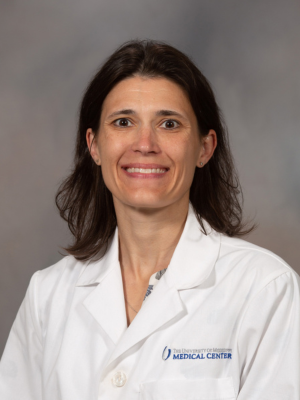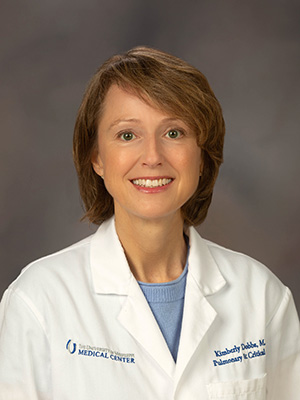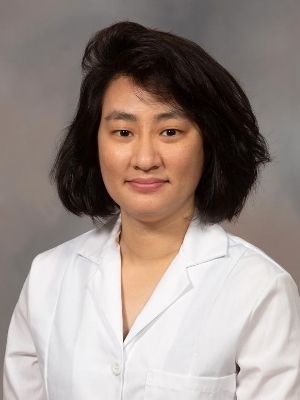Patient battling puzzling disease has message for fellow sufferers

These are some of the things Debora Delaney-Norris has lost since the diagnosis: her appetite, gallbladder, part of her eyesight, several teeth and feeling in her hands.
But there were some “gains” as well, particularly a knowledge of too many things she wishes she’d never had to learn.
Foremost is the knowledge that she has sarcoidosis, a relatively rare disease that can strike anyone, but which often saves its worst for African Americans, especially African American women.
That is a fact the Byram resident understands in her bones; and so, she is focused on making others aware of it, too, because “people in the Black community often don’t get treated or we don’t continue the treatment, and, so, we don’t survive as often,” she said.

In Mississippi, with its large Black population, awareness is critical, said Dr. Alissa Willis, “not only because we suspect sarcoidosis would be more common here than in many other states, but also because people who have it are likely to need multiple specialists to take care of it.”
Willis, the chair of neurology at the University of Mississippi Medical Center, is one such specialist, seeing patients in the only place in the state with a number of providers who have “special expertise” in treating sarcoidosis, she said.
The need for a variety of experts comes down to this: Sarcoidosis can strike several organs or systems at the same time, as is the case with Delaney-Norris. It affects her lungs, eyes and nerves; the medications meant to subdue it have taken a further toll – on her endurance and her bones.
“I broke my ankle just stepping off a sidewalk,” Delaney-Norris said. “I’ve lost about five teeth; I had to have them removed, they were so brittle.
“As for fatigue, I don’t feel it every day. There were times when it hit her and she was “barely able to get up.”
Sarcoidosis is an inflammatory disease: As the immune system attacks the body’s own tissues, inflammation follows. It can be genetic and it can be triggered by an infection or even by environmental scourges, such as mold or dust.
While clusters of inflamed tissue, called “granulomas,” populate the lungs and lymph nodes most often, they can strike any organ. If sarcoidosis invades the heart, or causes severe lung disease, it can be fatal.
One of its most famous victims is the late comedian Bernie Mac, taken in 2008.
And, yes, it is rare, but also devastating, a potentially deadly puzzle with no known cure and difficult to diagnose: Its symptoms can mimic other conditions, including the flu. The Foundation for Sarcoidosis Research (FSR) quotes estimates that 175,000 people in the U.S. have sarcoidosis.
“There are no statistics available on the number of people in Mississippi who have it,” Willis said, “but we expect it to be more common here than in other states because people of African descent are at higher risk and also at-risk for having it in organs besides the lungs.”
Willis is treating about 25 patients who have neurological sarcoidosis, a punisher of the brain, spinal cord or peripheral nerves. Because sarcoidosis more often invades the lungs, it’s likely that an even greater number of patients at UMMC see specialists like Dr. Kimberly Dobbs, an assistant professor of internal medicine-pulmonary disease.

“I don’t have an exact number for patients at the Medical Center, but, after making a quick interrogation into our system, I can estimate that around 2,300 patients have been seen here within the last 10 years,” Dobbs said.
“And I can say, anecdotally, that I lectured a group of internal medicine residents recently and asked if anyone had never seen sarcoidosis; no one raised a hand.”
About 80 percent of Dobbs’ patients are African American. “Those with the worst outcomes are Black women,” she said.
For her part, Delaney-Norris started having symptoms more than five years ago. She didn’t feel like eating and lost a “tremendous amount” of weight; she had a chronic cough and a fever above 100 degrees. At first, she was diagnosed with upper respiratory infection and, later, “walking pneumonia.”
Because her fever persisted, doctors explored further. An X-ray and, eventually, a biopsy of her lymph nodes, revealed the real culprit: pulmonary sarcoidosis on both lungs.
A milder form of sarcoidosis will disappear as soon as six months after diagnosis; this had seemed to be the case with Delaney-Norris. After six months of taking prescribed steroids, her symptoms improved, and she stopped her medications.
But about a year after her diagnosis, inflammation from the disease caused her to develop gallstones; because of the pain, she had to have her gallbladder removed.
“Then, COVID happened when no one could go to the doctor,” she said. “That’s when I noticed a loss of my vision.” And neuropathy in her hands, and stiffness in her neck.
“As soon as COVID was over, I was able to get in for an appointment, and I found that I had completely lost peripheral vison in my left eye and was losing vision in my right eye.” Tests showed she had the ocular and neuro versions of sarcoidosis. That wasn’t all.
“Another biopsy confirmed that sarcoidosis had come back to my lungs,” she said.
The toll of sarcoidosis is not limited to her health. Delaney-Norris had been a mentor for teachers in early childhood education, but, after exhausting her family medical leave time, lost her job and insurance.

Things are looking up, though. She is now doing consulting work related to her former job. And last week, she got another boost during an appointment with Dr. Cathy Lee Ching, an assistant professor of medicine-rheumatology.
In the exam room, Delaney-Norris reported that her bouts of fatigue and shortness of breath have let up; her appetite has improved.
From Delaney-Norris’ medical records, Lee discovered that a nodule on her patient’s left optical nerve has vanished. She is seeing better.
“This is good news,” the physician said. “I was not expecting this.”
“I was praying for it,” Delaney-Norris said.
More tests will determine what needs to be done next.
In the meantime, sarcoidosis occupies Delaney-Norris’ time in another, more satisfying, way. She has volunteered to lead community outreach for a local Foundation for Sarcoidosis Research group; she works with UMMC to support patients and their caregivers, recruit for the group, bring awareness about the disease and advocate for better treatments.
UMMC, which sometimes provides a meeting place for the FSR group, is a founding member of the FSR Global Clinic Sarcoidosis Alliance whose work includes “helping patients who are newly diagnosed find the experts and treatments that are specifically for sarcoidosis,” Willis said.
“Patients monitored by providers who know how to manage sarcoidosis can do very well.”
Delaney-Norris, who sees several specialists, urges others to get regular checkups, especially if they experience sarcoidosis-like symptoms, to “get ahead, in case something is there. If you are diagnosed, look up a support group.
“People who are living with it, and their caretakers, need to be a part of the conversation. When you’re part of the conversation, you can be part of the solution.”


